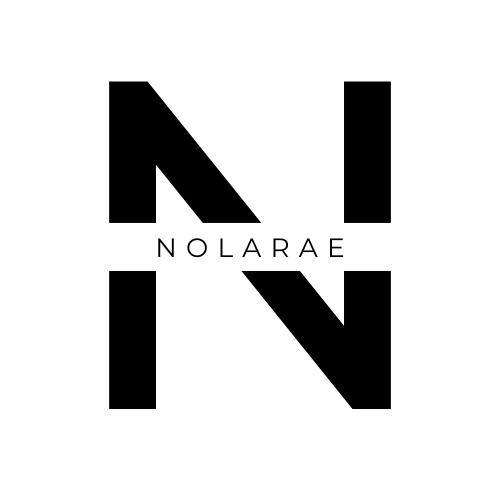The Influence of Virtual Reality in the Entertainment Industry
- Amani Henry
- May 4
- 4 min read
Updated: May 10
Virtual reality (VR) is no longer just for gamers. It’s transforming entertainment—offering immersive concerts, interactive films, and virtual stage performances. As the technology evolves, creators are using VR to break the fourth wall and give audiences a front-row seat to entirely new experiences.

🌐 VR Is Reshaping Entertainment
What once sounded like science fiction is now an evolving creative platform. From blockbuster movies to music festivals, VR is changing how stories are told and how audiences experience them.
📽️ What’s Driving the Shift?
Immersive storytelling – Instead of watching a story unfold, users step inside it
Global access – VR allows fans to experience events from anywhere in the world
Audience engagement – Interactive content encourages viewers to explore, not just observe
Big tech investment is accelerating adoption. Meta’s continued push with the Quest series and Apple’s Vision Pro launch are just the tip of the iceberg. Content creators and studios are already adapting, experimenting, and redefining what digital entertainment can be.
🎬 Film & TV: Rewriting the Script
VR isn’t replacing traditional cinema—it’s rewriting its boundaries. In VR storytelling, the audience becomes a character in the story.
🎥 Examples of VR in Film:
The Line - An award-winning Brazilian short VR film where users explore a miniature world
Wolves in the Walls - A VR adaptation of Neil Gaiman’s story that blends animation and interaction
Virtual movie screenings - Platforms like Bigscreen let users watch films together in virtual theatres
🎭 What’s changing?
Passive viewers become active participants
Directors now design 360° environments instead of framing shots
Stories can unfold differently based on where the user looks or moves
These experiences build emotional connection in new ways, giving audiences agency within the story world—a huge leap beyond flat-screen viewing.
🎵Music & Live Events: Your Front-Row Seat, Anywhere
Live music has also gone virtual—and it’s not just a livestream. VR concerts create entire worlds around the performance.
🔊 Standout VR Concert Moments:
Travis Scott’s Fortnite concert – 45 million viewers watched a giant virtual avatar perform
Wave XR performances – Artists like The Weeknd and Lindsey Stirling use avatars and motion capture to perform in VR
Coachella in VR – The iconic festival offered a 360° experience through the YouTube app
🎶 Why it works:
Fans can “attend” without the cost or crowds
Artists can defy physical limits with surreal visuals
Venues aren’t bound by real-world capacity
These digital shows aren't just gimmicks—they’re becoming a legitimate tour stop on an artist’s calendar, with real revenue streams from ticket sales, merch, and NFTs.
🎭Theatre & Performing Arts: Expanding the Stage
Theatre may be centuries old, but it’s stepping boldly into the future. VR allows audiences to walk through sets, stand on stage, or follow characters around as stories unfold.
🎟️ Innovative VR Theatre Projects:
The Under Presents – A mix of immersive theatre and VR gaming with live actors interacting in real time
Royal Shakespeare Company – Exploring VR stage design and digital sets
National Theatre's VR lab – Experimenting with 360° immersive rehearsals and performances
This tech allows smaller productions to reach global audiences, expand their creative tools, and offer unique, intimate performances—even from home.
🧠 Why Audiences Love It
VR entertainment is booming not just because it’s new—but because it delivers what modern audiences crave:
✨ Immersion – Feeling like you're inside the story
🎮 Interactivity – Choosing how and where to engage
🌍 Accessibility – Joining events and performances from anywhere
Audiences are no longer passive consumers—they’re explorers, collaborators, and sometimes even characters. This dynamic gives them agency and turns every viewing into a personal journey.
🛠️ Behind the Scenes: Tech That Makes It Happen
VR entertainment relies on a growing ecosystem of hardware and software.
🔧 Key Tools of the Trade:
Headsets – Meta Quest 3, Apple Vision Pro, HTC Vive
Motion capture – Tracks real-world movements for avatar animation
Game engines – Unity and Unreal Engine power interactive environments
Spatial audio – Creates 3D soundscapes that move with the viewer
These tools are becoming more accessible, enabling indie creators, theatre troupes, and small studios to produce polished VR experiences without Hollywood budgets.
💼 What This Means for Creators & the Industry
The shift to VR isn’t just a novelty—it’s a growing opportunity.
📈 Opportunities for Creatives:
Build immersive experiences without needing a studio lot
Monetise through virtual ticketing, subscriptions, or merch
Collaborate globally with talent from anywhere
For media companies:
VR offers a fresh way to engage younger, tech-savvy audiences
It creates premium content with built-in replay and interaction value
It unlocks data—what users look at, how long they engage, and where they go
This insight lets studios refine experiences in real time, making each show or release more targeted, responsive, and profitable.
🎯 The New Entertainment Norm
Virtual reality isn't the future of entertainment—it's part of its present. From interactive films to boundary-pushing concerts and virtual stages, VR is embedding itself into how we create, consume, and connect through media.
For creators, it’s an invitation to explore new dimensions.For fans, it’s a chance to be more than a spectator.For the industry, it’s a powerful new frontier.
🎥 The screen is no longer the limit. Now, the entire world is a stage—and we get to walk through it.
